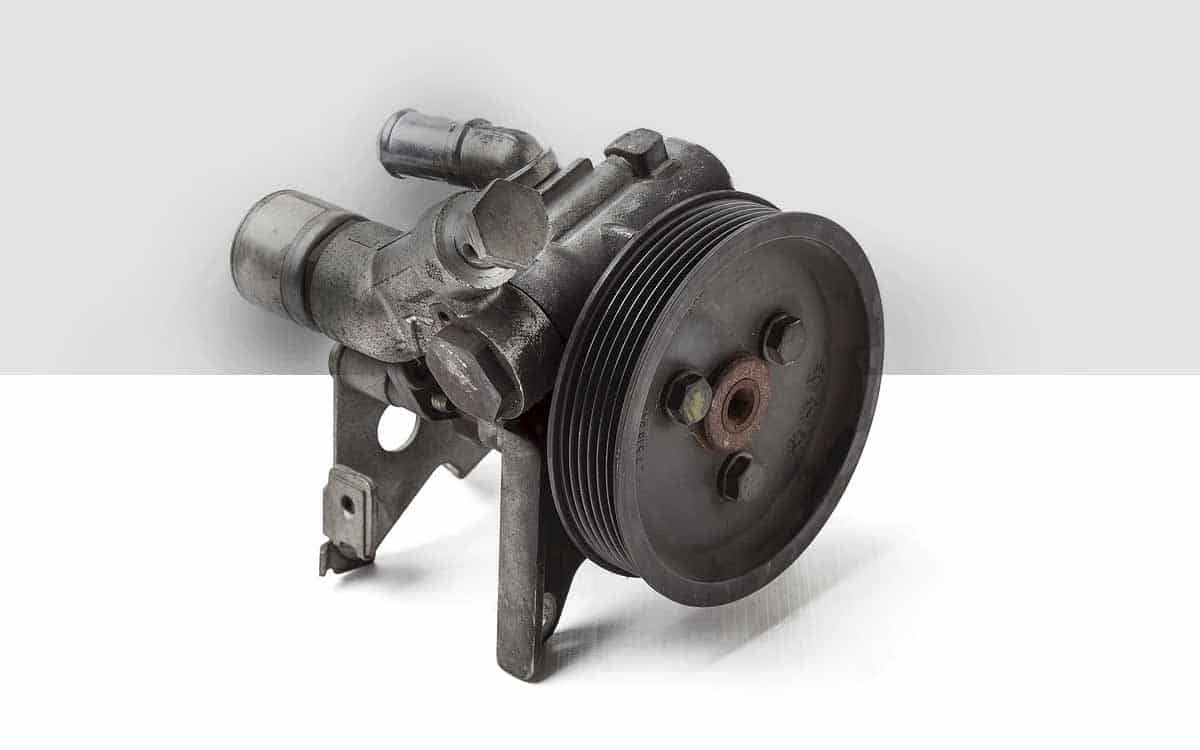If you’ve been experiencing problems with your power steering, the first step is to determine whether or not the issue is with the power steering pump. In this article, we’ll talk about what a power steering pump does, common symptoms of a bad pump, and how to know if it’s time for a replacement. We’ll also cover some tips for prolonging the life of your power steering pump.
What is a power steering pump?
A power steering pump is a hydraulic pump that is responsible for providing the pressure needed to assist in steering the wheels of a vehicle. The pump uses fluid from the power steering reservoir to create the necessary pressure.
Common symptoms of a bad power steering pump?
Several symptoms can indicate a problem with the power steering pump, including:
1. The steering wheel feels heavy or hard to turn
The first symptom of a bad steering pump is it feels very difficult to turn, this happens because there isn’t enough pressure to assist in steering.
2. The steering wheel shakes or is squeaking
If the power steering pump is going bad, you may also notice that the steering wheel begins to shake or make noise when you turn it.
3. Steering fluid leaks
Another common symptom of a problem with the power steering pump is a leak in the system. You may notice a puddle of fluid beneath your car after it has been parked, or you may see fluid leaking from the power steering reservoir.
If you’re experiencing any of these problems, it’s important to have your vehicle inspected by a qualified mechanic as soon as possible.
What causes a power steering pump to fail?
There are several reasons why a power steering pump may fail, including:
1. Contaminated fluid
If the fluid in the power steering system becomes contaminated with dirt or debris, it can damage the pump. Contamination occurs when the system is low on fluid, allowing dirt and debris to enter.
2. Wear and tear
Over time, the seals in the power steering pump can wear out, leading to leaks. Additionally, the bearings in the pump can become worn, causing it to fail.
3. Lack of fluid
If the power steering system runs low on fluid, it can cause the pump to overheat and fail.
How do I know if it’s time for a replacement?
Oftentimes, a bad power steering pump will exhibit symptoms similar to other problems in the system such as low fluid levels or a worn belt. As such, it’s important to have your vehicle inspected by a qualified mechanic who can diagnose the problem and recommend the best course of action.
If you do need to replace your power steering pump, it’s important to choose a quality replacement that is designed for your specific vehicle. Once you have a new pump installed, be sure to keep an eye on the fluid level and condition, and have the system flushed and replaced as needed.
Following these tips will help you extend the life of your power steering pump and avoid costly repairs down the road.
Tips for prolonging the life of your power steering pump
There are several things you can do to help extend the life of your power steering pump, including:
1. Check fluid level regularly and top off as needed
Checking the fluid of your power steering is super important because it can help you avoid problems before they start. It can also help you identify leaks early on and help you take the necessary steps or action needed.
2. Avoid sudden starts and stops
The way you drive can have an impact on the lifespan of your power steering pump. For example, if you frequently make hard turns or quick stops, it puts additional strain on the pump and can cause it to fail prematurely.
3. Avoid driving in extreme weather conditions
If possible, try to avoid driving in extreme hot or cold weather conditions. Extreme temperatures can cause the fluid in your power steering system to break down, which can lead to problems with the pump.
4. Avoid using excessive force when steering
If you find yourself having to use a lot of force to steer, there may be something wrong with your power steering system. It’s best to have it checked out as soon as possible.
5. Be careful when driving on rough roads
Driving on rough roads can put extra strain on your power steering system which can in turn cause fractures or cracks. If possible, try to avoid driving on them.
6. Use only manufacturer-recommended fluids
It is important to use steering fluids from recommended brands like Ford, GMC, and Toyota. These fluids are designed to work specifically with your power steering pump and can help extend its lifespan.
7. Have any leaks repaired promptly
Finally, If you happen to find leaks or cracks in your pump, have them repaired as soon as possible. Ignoring these problems can lead to further damage down the road.
In conclusion…
A power steering pump is a crucial component of your vehicle’s power steering system. If you’re experiencing problems with your power steering, it’s important to have it checked out by a qualified mechanic as soon as possible. However, if the pump is damaged beyond repair, it will need to be replaced.

